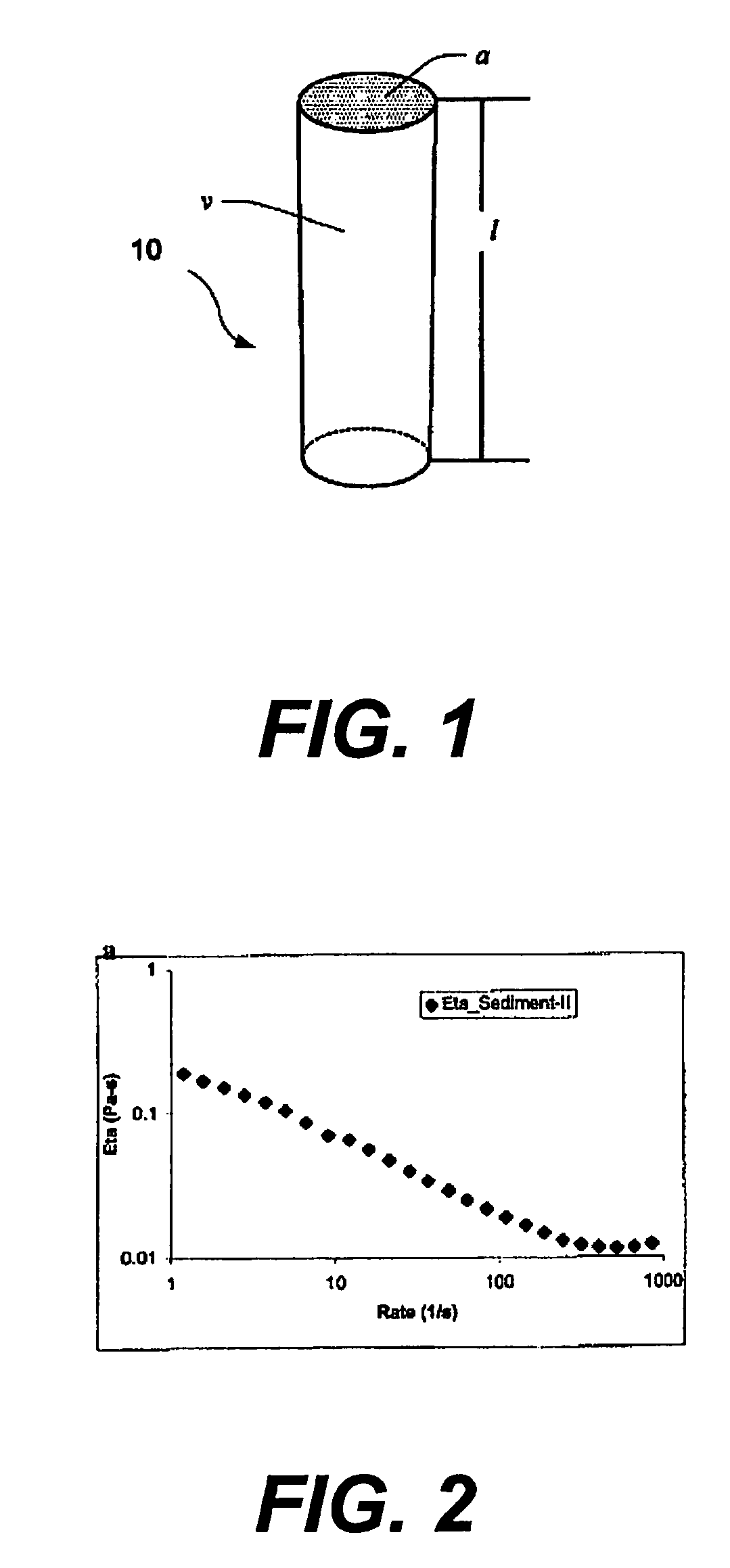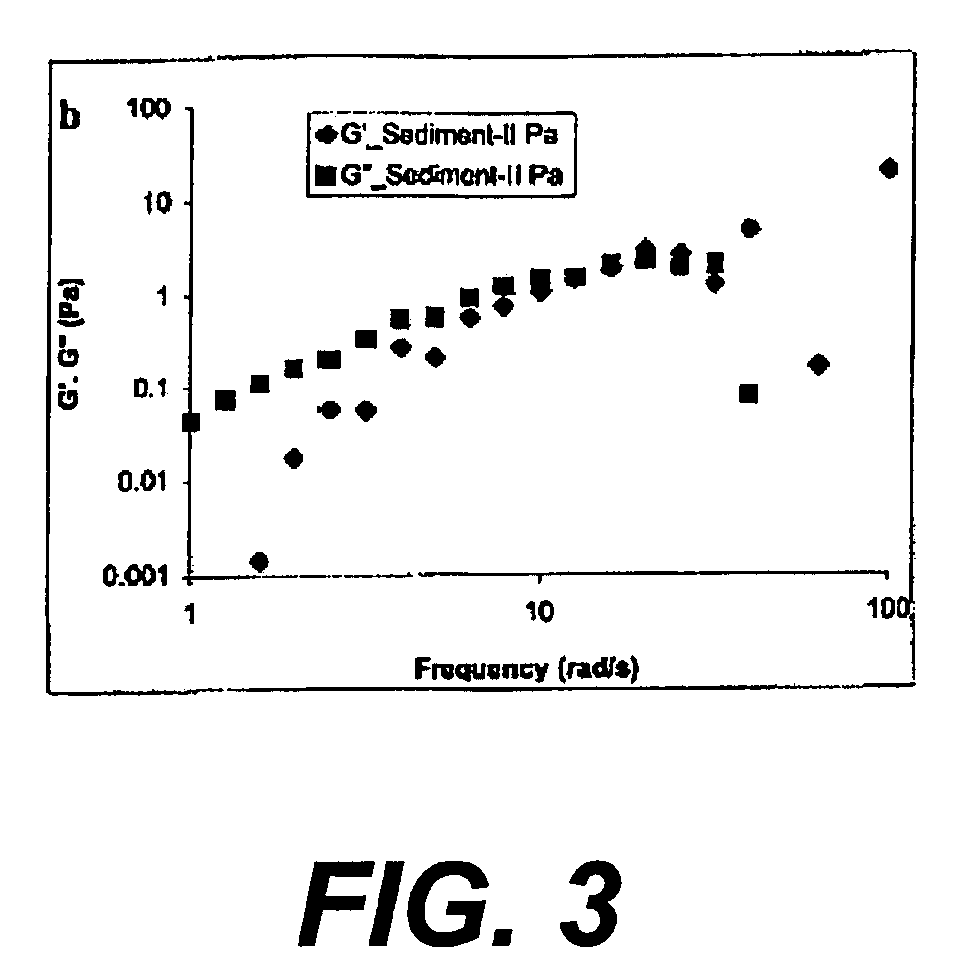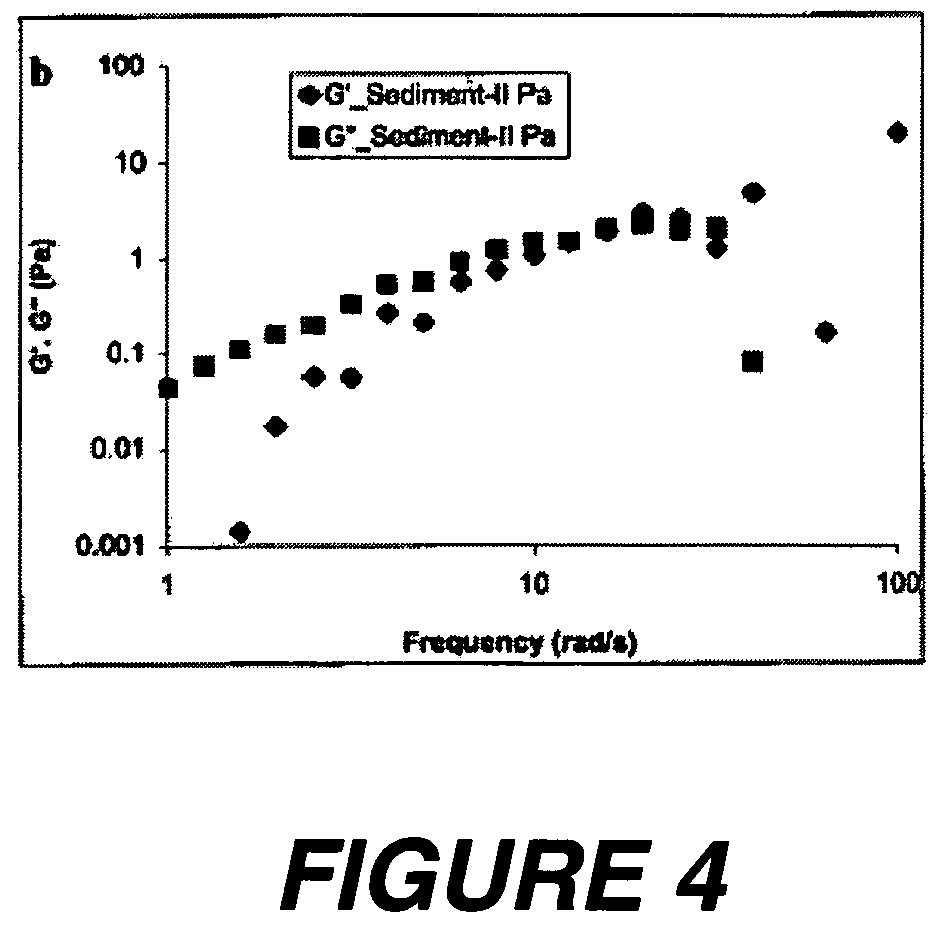Polymersome compositions and associated methods of use
a technology of polymersomes and compositions, applied in the direction of chemistry apparatus and processes, well accessories, sealing/packing, etc., can solve the problems of increasing the cost and complexity of drilling operations, affecting the effect of drilling efficiency, and affecting the quality of the finished product, so as to achieve the effect of creating or enhancing at least one fractur
- Summary
- Abstract
- Description
- Claims
- Application Information
AI Technical Summary
Benefits of technology
Problems solved by technology
Method used
Image
Examples
example 1
[0059]In the following example, polymersomes were formed using the solvent injection method of preparation. First, a sample solution of poly(butadiene-b-acrylic acid) block copolymer in chloroform was prepared, wherein the block copolymer had a hydrophilic mass fraction of 30% and a molecular weight of 8,000. Depending on the application, the block copolymer concentrations in the sample solution vary between 4 to 100 mg / ml.
[0060]To make polymersomes, the sample solution was injected into deionized water under high shear using a homogenizer (Tekmar Tissumizer) at 20% output for 10 minutes to form a homogenized sample solution. Alternatively, homogenization also may be carried out using a bench-top vortex mixer. Depending on the concentration of the sample solution, the homogenized sample solution may be either clear or opaque. For example, when 0.8 ml of 20 mg / ml sample solution is injected into 5.35 ml deionized water, a turbid solution was observed. On the other hand, when 55 μl of...
example 2
[0064]Upon observation, the polymersomes present in the vesicle solution prepared in Example 1 showed gravitational settling to form sediment in the vesicle solution. The rheological properties of the sediment that includes polymersomes were investigated using a Rheometrics dynamic stress rheometer (“DSR”).
[0065]First, to determine the desired rheological properties of the polymersomes, the sediment in the vesicle solution was collected with a micropipette and transferred to the DSR. Using the DSR, dynamic and steady state properties of the sediment were determined. To study the behavior of the sediment under steady shear, steady rate sweeps were performed that covered shear rates between 0.7 and 1000 s−1. Results of the rate sweeps indicated that the sediment showed shear thinning behavior. Dynamic properties were used to separate storage modulus (G′) and loss modulus (C″) of the sediment to obtain information about elastic and viscous behavior of the vesicle solution. A frequency ...
example 3
[0068]To investigate the morphology of the vesicle solution, as well as the efficiency of the solvent injection method, in terms of the amount of polymer converted to polymersomes, experiments were carried out, as described below, using a Philips XL30 high-resolution field-emission Scanning Electron Microscope (“SEM”) and a Transmission Electron Microscope (“TEM”).
[0069]First, a SEM experiment was carried out. A drop of the vesicle solution was placed on double-sided tape on a SEM sample mount. The drop was allowed to dry at room temperature for several hours. After drying, the SEM sample mount was placed in a VCR IBS / TM 200S Ion Beam Sputterer (“IBS”), and the surface of the dried drop of the vesicle solution was coated with 10–20 nm of Au. This sample was then analyzed with the SEM. SEM results indicated a very high conversion to polymersomes, and, therefore, a high yield of vesicular formation.
[0070]For the TEM experiments, the vesicle solution was fixed using 2% osmium tetroxide...
PUM
| Property | Measurement | Unit |
|---|---|---|
| hydrophilic mass fraction | aaaaa | aaaaa |
| pressures | aaaaa | aaaaa |
| hydrophobic mass fraction | aaaaa | aaaaa |
Abstract
Description
Claims
Application Information
 Login to View More
Login to View More - R&D
- Intellectual Property
- Life Sciences
- Materials
- Tech Scout
- Unparalleled Data Quality
- Higher Quality Content
- 60% Fewer Hallucinations
Browse by: Latest US Patents, China's latest patents, Technical Efficacy Thesaurus, Application Domain, Technology Topic, Popular Technical Reports.
© 2025 PatSnap. All rights reserved.Legal|Privacy policy|Modern Slavery Act Transparency Statement|Sitemap|About US| Contact US: help@patsnap.com



